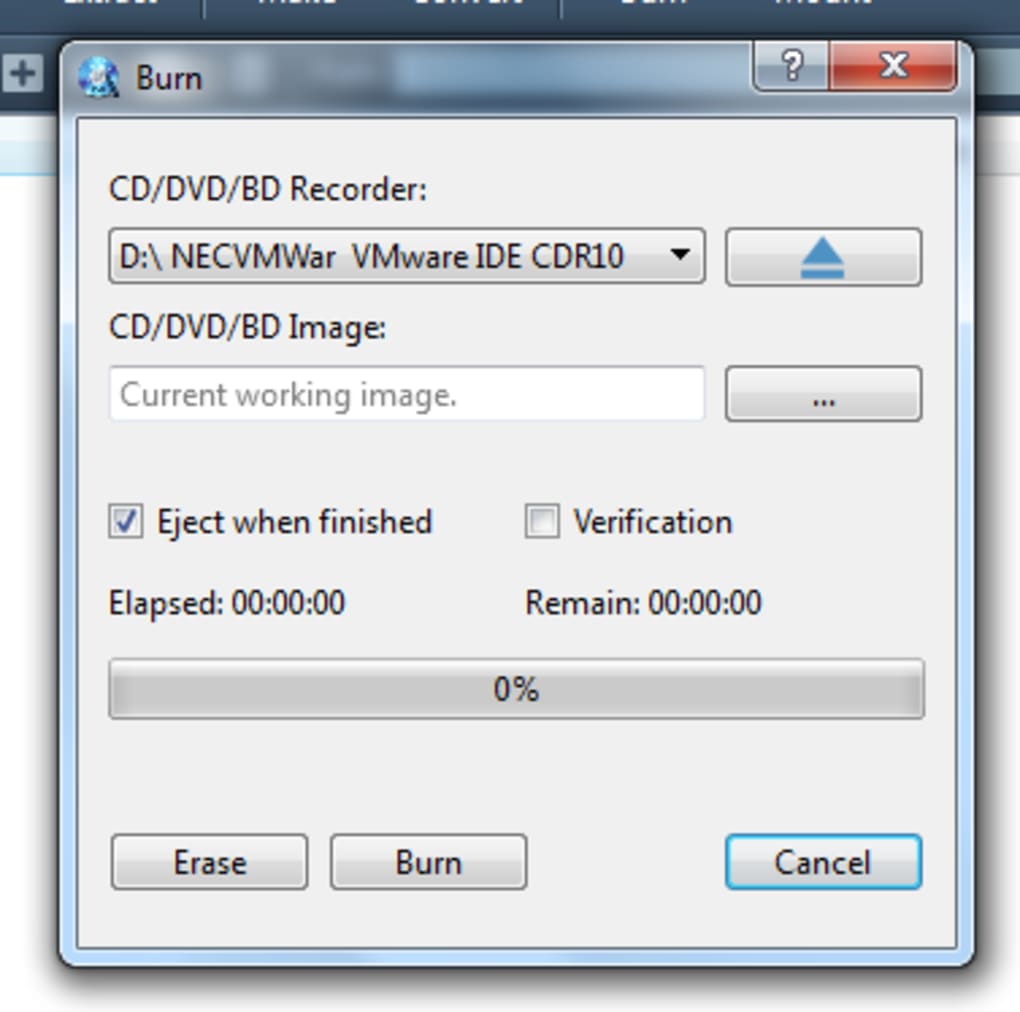

- Bootable windows 7 with winiso install#
- Bootable windows 7 with winiso update#
- Bootable windows 7 with winiso manual#
- Bootable windows 7 with winiso windows 10#
Mount your ISO sudo mount -o loop /path/to/windows/iso/filename.iso ~/winisoĬreate a folder to mount your USB mkdir ~/winusb sudo mkfs.ntfs /dev/sdX1Ĭreate a folder to mount your ISO mkdir ~/winiso Format the device using exfat or ntfs (replace sdy with device letter from above) to overcome the size limitation of FAT32.
Bootable windows 7 with winiso windows 10#
Newer versions of Windows 10 ISO contains a file bigger than 4G.
 Enter - accept default first sector 2048. Enter - accept default partition number 1. Enter - accept default partition type primary. o - create a new empty DOS partition table. The partitioning may need rework due to single file inside Windows ISO is larger than 4G. Then use fdisk to create the filesystem needed for the Windows ISO (replace X with device letter from above). sudo dd if=/dev/zero of=/dev/sdy bs=1M count=10 oflag=sync In the terminal clear the disk of any partition info, using this command (replace sdy with device letter from above). If you only have one disk then it probably will be /dev/sdb. Insert your USB stick and list your devices one more time lsblk -la Remove all removable devices (USB), open a terminal and list known disk devices lsblk -la The latest Windows ISO files contains a file larger than 4G - so choose NTFS as file system. The process is unpacking files from the ISO and copying them to the USB. Then launch the app and get your ISO done. Use the package woeusb available from AUR pamac build woeusb If you don't wait - data corruption will occur - and you don't want that. When the command finishes you can unmount the device sudo umount /mnt Using the device name from above mount the first partition to a temporary mount point sudo mount /dev/sdy1 /mntĬopy the ISO file to the USB - assuming the ISO is in your Downloads folder cp ~/Downloads/ /mnt & sync When the copy operation is done - use the eject button in your file manager - and wait - wait until the device disappears from your file manager. Using your file manager and drag your Windows ISO onto you USB and wait - patience is the keyword - patience. Replace sdy below with your device sudo ventoy -i /dev/sdy
Enter - accept default first sector 2048. Enter - accept default partition number 1. Enter - accept default partition type primary. o - create a new empty DOS partition table. The partitioning may need rework due to single file inside Windows ISO is larger than 4G. Then use fdisk to create the filesystem needed for the Windows ISO (replace X with device letter from above). sudo dd if=/dev/zero of=/dev/sdy bs=1M count=10 oflag=sync In the terminal clear the disk of any partition info, using this command (replace sdy with device letter from above). If you only have one disk then it probably will be /dev/sdb. Insert your USB stick and list your devices one more time lsblk -la Remove all removable devices (USB), open a terminal and list known disk devices lsblk -la The latest Windows ISO files contains a file larger than 4G - so choose NTFS as file system. The process is unpacking files from the ISO and copying them to the USB. Then launch the app and get your ISO done. Use the package woeusb available from AUR pamac build woeusb If you don't wait - data corruption will occur - and you don't want that. When the command finishes you can unmount the device sudo umount /mnt Using the device name from above mount the first partition to a temporary mount point sudo mount /dev/sdy1 /mntĬopy the ISO file to the USB - assuming the ISO is in your Downloads folder cp ~/Downloads/ /mnt & sync When the copy operation is done - use the eject button in your file manager - and wait - wait until the device disappears from your file manager. Using your file manager and drag your Windows ISO onto you USB and wait - patience is the keyword - patience. Replace sdy below with your device sudo ventoy -i /dev/sdy Bootable windows 7 with winiso install#
Install the ventoy package from repo sudo pacman -S ventoy The ventoy utility is a great tool for booting a Windows ISO without having to jump through the hoops in this guide.

Very receently a new tool has become available - the ventoy project - which makes the task even easier. Thanks to his work the Linux community have an app to do abstract the CLI work.
Bootable windows 7 with winiso manual#
Only the manual approach described below was viable - until af few years ago when the github user slacka forked the WinUSB project. If you want to reinstall Windows after your Manjaro adventure get a Windows ISO from Microsoft

Bootable windows 7 with winiso update#
To update you system firmware you can use a Windows PE environment like Hiren's BootCD Hirens BootCD reinstalling Windows but it could also be to update your system firmware - because the vendor only provided Windows binaries - you need a Windows system. The reason for needing this could be e.g. Creating a bootable USB from a Windows ISO








 0 kommentar(er)
0 kommentar(er)
